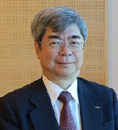關鍵字:村田制作所 物聯網 MEMS
在接受EETimes美國版的采訪時,村田制作所社長村田恒夫(Tsuneo Murata)表示,該公司其實已有20年的傳感器生產歷史,但產品的品質不如VTI;該公司未來確實打算從被動組件的生產,往更高復雜度、更高價值的產 品項目邁進,但是不會背離原有業務太遠。村田強調,其收購策略不只與產品復雜度、價值相關,也重視終端應用市場的擴展:“以VTI為例,該公司在汽車與工業應用領域有很強的基礎,而這些領域是村田制作所較不擅長的。”
村田表示,該公司向來的強項是通訊與消費性電子應用領域,有45%營收來自于通訊、19%來自PC與外圍,10%則是來自視聽消費性電子;而VTI有75% 的營收來自于汽車領域,是加速度計、陀螺儀與電子車身穩定控制系統(electronic stability control,ESC)用組合組件的主要供貨商。村田制作所是在2012年1月以200億日圓(約1.9億歐元、2.6億美元)現金收購VTI,后者以 6吋晶圓生產MEMS。
“我們希望能藉由收購強化在汽車應用領域的業務,然后能為消費性應用領域帶來一些新產品。”村田表示,汽車市場有很不錯的商機,特別是汽車內部的電子組件有越來越增加的趨勢;而他們的下一步是將MEMS技術導入消費性電子領域。
與VTI擅長的汽車或醫療應用領域相較,消費性應用市場是很不同的,后者對規格的要求雖然較低,但利潤卻很微薄、產品價格下滑壓力也很大;村田指出:“消費性市場競爭不易,我們需要一個好策略,也許會利用一些委外代工資源。”這意味著該公司可能不會急著將VTI在芬蘭Vantaa的生產線升級至8吋晶圓,反而會傾向于和晶圓代工大廠如GlobalFoundries、臺積電(TSMC)合作。
 村田制作所社長村田恒夫(Tsuneo Murata)在芬蘭VTI總部接受EETimes專訪 |
至于在中國、 印度等新興市場的策略,村田表示,該公司在中國武漢與深圳各有一座工廠,生產多層陶瓷電容(MLCC)、無線通訊模塊與電源供應器;而他也指出,中國已經 成為世界的電子工廠,村田制作所有五成的產品是銷往中國,用來組裝成各種電子產品、然后賣到世界各地。村田指出,該公司已經開始在中國進行電源供應器與無 線通訊模塊的設計開發。
村田制作所有八成的生產是在日本,但卻有八成五的營收是來自于海外市場,因此該公司對于匯率波動十分敏感;對此村田表示:“因此我們嘗試在日本以外的地區建立制造據點,如中國、泰國與新加坡;”該公司位于于菲律賓的陶瓷電容工廠預計2013年開幕。
而在被問到繼MEMS之后,村田制作所還將更進一步投入其它高復雜性產品如數字電子組件、軟件嗎?村田表示,該公司是有能力的:“我們收購了一家Wi-Fi 無線通訊模塊供貨商Sychip,該公司也具備軟件開能力;利用其專長,我們正試圖開發無線通訊感測網絡應用方案,能用以打造智能家庭,包括控制燈光、 空調、室內溫度監控等…可聰明省電的方法。”他指出,此策略將與目前在中國、日本當紅的物聯網(IoT)概念結合,但產品上市時間未定。
最后,針對村田制作所是否會繼續藉由收購策略來取得更多新技術的問題,村田并沒有直接回答,僅表示:“我們一直在觀察科技的演變,以得知是否有更新的技術會 使得我們部分業務被取代;我們也一直注意新公司、研究機構的行動。收購并非擴展我們技術能力的唯一途徑,我們也可能會與伙伴合作,與業界、學界進行新技術研發的投資。”
Murata wants to build from MEMS to Internet of Things
Peter Clarke
VANTAA, Finland – Murata Manufacturing Co. Ltd. has been on the acquisition trail for several years and it is now fine tuning its approach as it seeks to move up in complexity and value through MEMS to the Internet of Things (IoT).
Murata (Kyoto, Japan) is often billed as a passives-to-power-supplies giant. With annual sales of 584.7 billion yen (about $7.34 billion) in the year to March 31, 2012, Murata is definitely a giant and one that is well known for its multilayer ceramic capacitors, but it makes a broad range of components including wireless modules and a variety of sensors.
In an interview with president Tsuneo Murata, conducted during his visit to the newly acquired MEMS manufacturer VTI Technologies Oy (Vantaa, Finland) here – as it was renamed Murata Electronics Oy – EE Times asked Murata about the company's acquisition strategy.
Tsuneo Murata, president of Murata Manufacturing Co. Ltd., during his visit to the company's MEMS subsidiary in Finland on May 25, 2012.
Was it about moving away from passives and up in terms of complexity and value? "Murata has produced sensors for 20 years. But without creating such good quality as VTI," said Murata. "Yes we are going to go in that direction but not go too far away from the original business."
And Murata emphasized that it is not just about the product complexity and value but also about the end markets. "In the case of VTI they are very strong in automotive and industrial, areas where Murata is not so strong."
Murata's strengths traditionally lie in communications and consumer applications with 45 percent of sales in communications, 19 percent in PCs and peripherals and 10 percent in audio-visual consumer electronics, Murata said. About 75 percent of VTI sales are into the automotive sector where it is a leading supplier of accelerometers, gyroscopes and combo units for electronic stability control (ESC).
Murata acquired VTI, which manufactures MEMS on 150-mm diameter wafers, in January 2012 for about 20 billion yen (about 190 million euro or $260 million) in cash, so what does the company intend to do with it?
"We want to reinforce the business in automotive. Then we want to have new products in the consumer area," said Murata. Murata said automotive is good business and expanding as the electronics content of automobiles goes up. Providing MEMS to the consumer sector will be a next step. The consumer market is quite different to the automotive and medical sectors where VTI has been strong, characterized by less demanding specifications but thin margins and downward price pressure. "It's very tough to compete [in consumer]. We need to have a good strategy," said Murata. "To get into consumer we may need to utilize some outsourcing," he added.
This suggests that rather than expand into 200-mm wafer processing in Vantaa the company is more likely to work with one of the mainstream IC foundries, such as GlobalFoundries Inc. or Taiwan Semiconductor Manufacturing Co. Ltd. that have fabs in southeast Asia, and who are eager to expand into MEMS production.
IoT is popular in China and Japan
What is Murata's approach to developing countries such as China, India?
"We have two factories in China, one in Wuxi and one in Shenzhen, making MLCCS and wireless communications modules and power supplies." Murata goes on to indicate that China has become the world's electronics factory, stating that 50 percent of all of Murata's production is shipped to China for assembly into equipment. That equipment then goes all over the world. He adds that Murata is starting to develop design functions in China for power supplies and wireless communications modules.
However, some 80 percent of Murata's production is in Japan while 85 percent of sales are outside of Japan, which makes the company sensitive to exchange rates, Murata said. "So we try to encourage production outside Japan; in China, Thailand, Singapore." The next step is to open an MLCC factory in the Phillipines in 2013, he added.
So after MEMS will Murata continue to move up in complexity and into digital electronics and software?
"We have that capability," says Murata. "We acquired Sychip. They produce wireless communications modules based on the Wi-Fi standard. They also have software capability for protocol for communications module. Using these kind of people we are trying to develop wireless sensor networks, which can be used in smart house; smart way to use electricity, lighting dimmers, airconditioning, temperature monitoring."
Murata said this strategy links into the Internet of Things or IoT which is a popular topic, but particularly in China and Japan. "We're not sure how soon this technology will be used in the market."
When asked why China and Japan are pursuing IoT so aggressively Murata responded: "One reason is the energy crisis in Japan. We have shut down all the nuclear plants. And in China the demand for electricity is increasing very rapidly and they face environmental issues."
As a final question EE Times asked Murata about his company’s approach to supporting startup companies that, because they are agile, can often be source of new technologies that electronics giants may then choose to acquire.
"We always watch the movement of technology. We want to know if new technology will displace some of our business. We always watch those activities at new companies and amongst research people," Murata said, without mentioning funding startups.
"Acquisition is not the only way to extend our technology. We may collaborate in partnerships. We do some investment of funding for new development at companies and with universities."
VTI Technologies in Vantaa near Helsinki is renamed Murata Electronics Oy
 移動設備訪問
移動設備訪問